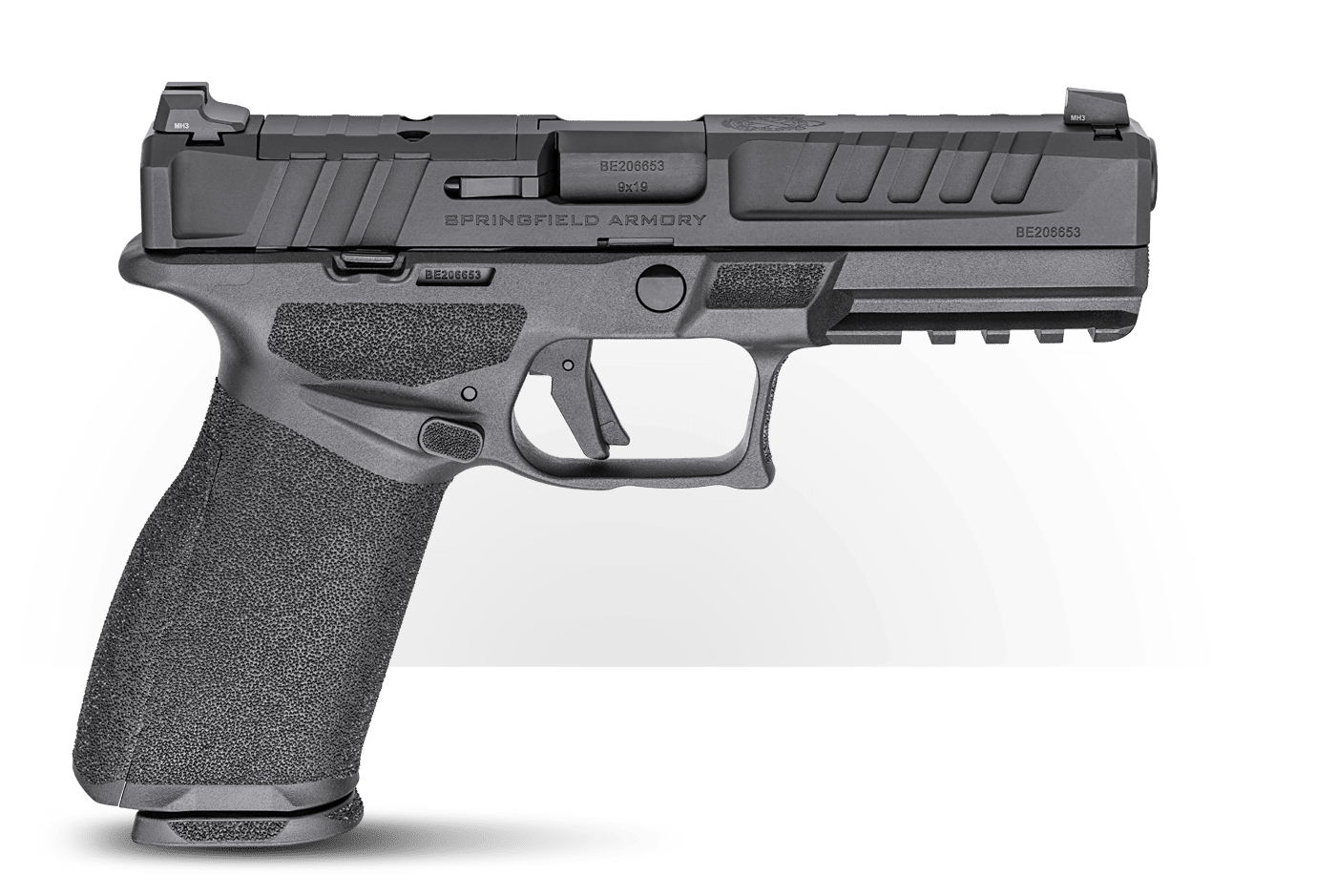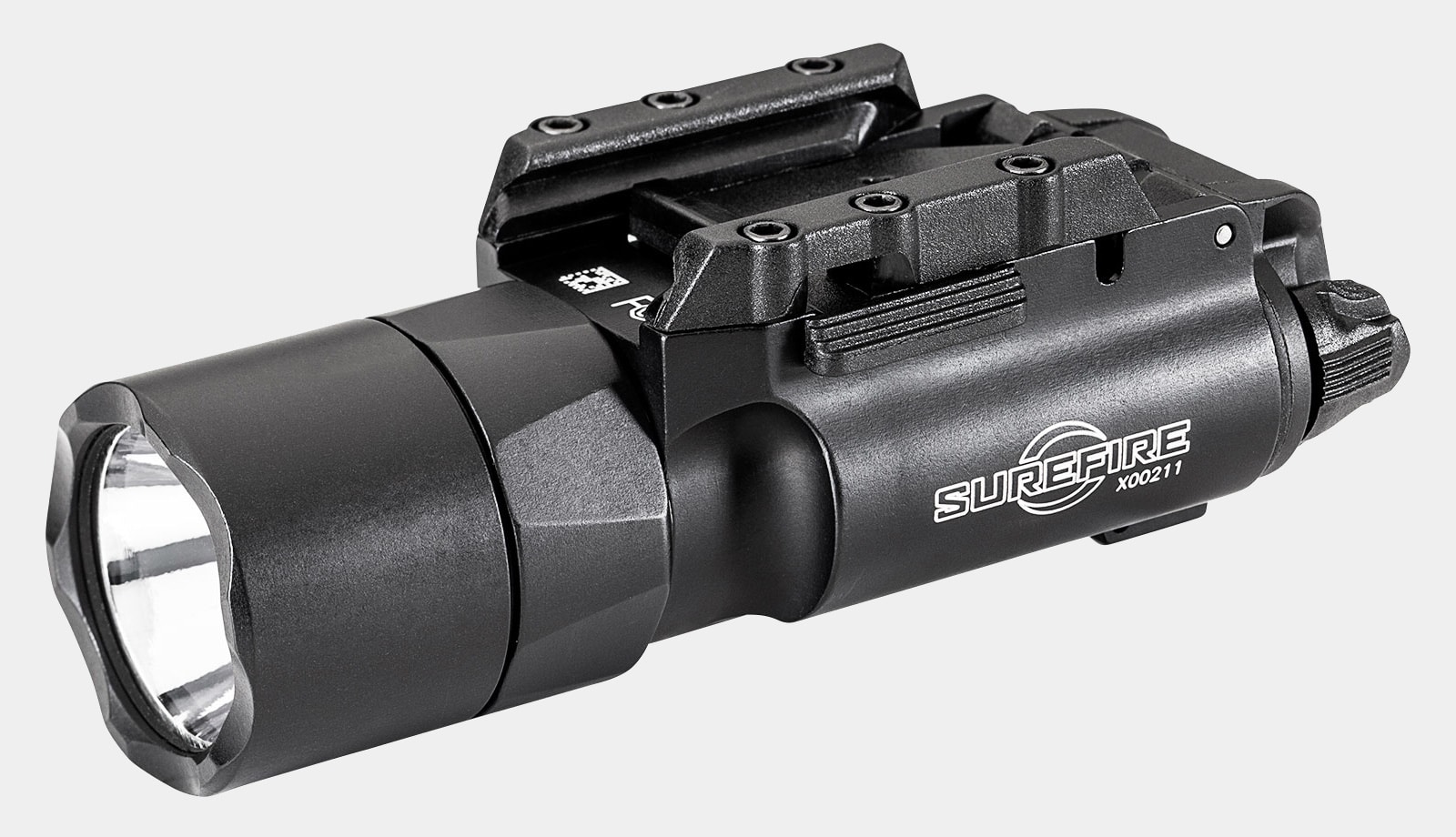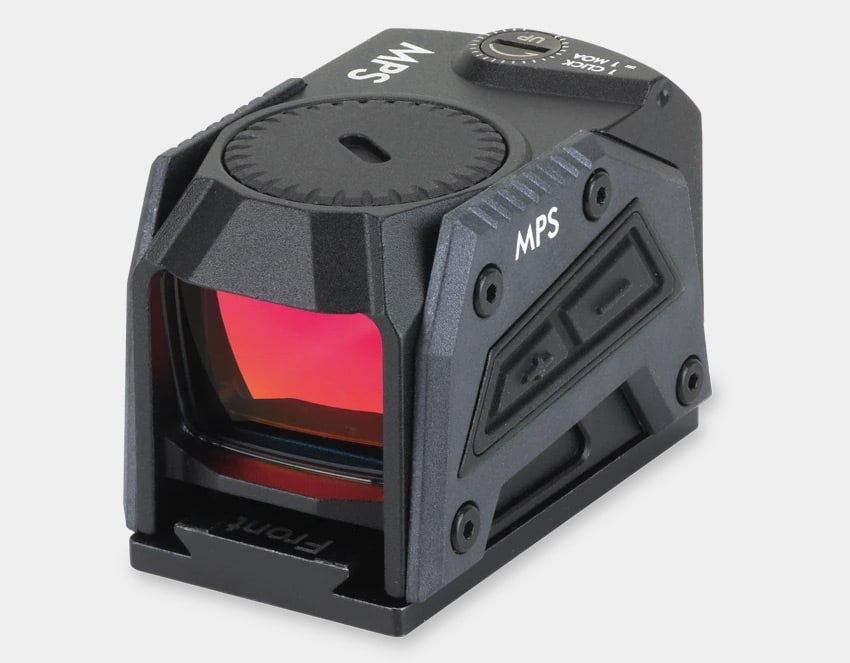In late 2023, the Springfield Armory Echelon hit the market like a sledgehammer. The Echelon, in its current form of a full-sized 17-round duty pistol, seemed to give us every option we wanted right out of the box.
At first touch you would notice the Adaptive Grip Texture, which is aggressive enough for hard use once pressure is applied, but smooth enough for concealed carry so you don’t get rubbed raw. [Editor: Read more about this grip texture.] Inside the grip module is the Central Operating Group. This is a stainless steel chassis that is the serialized part of the firearm, allowing you to use any of the available three grip module sizes for a custom fit.
Of course, it is optic-ready — but takes it up a level. The Variable Interface System offers direct mounting of an optic to the slide with more than 30 of today’s most popular optics, with an advanced locking pin system. This system prevents side-to-side movement of optics, and also offers the lowest possible optic deck height to allow the co-witnessing of the pistol’s iron sights with a large number of popular optics.
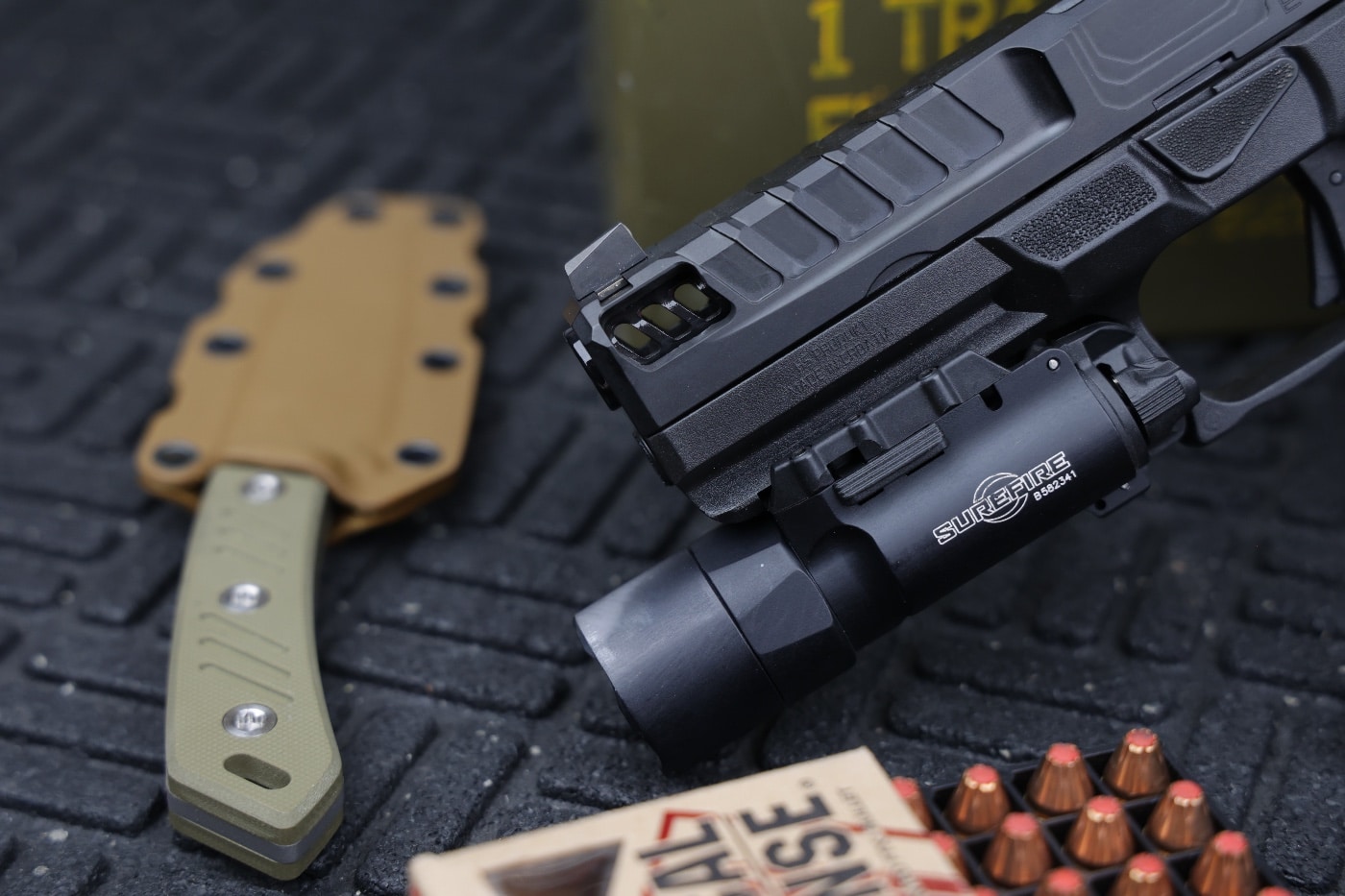
The pistol has fully ambidextrous controls, textured indexing points on the frame, a double undercut triggerguard, and an excellent striker-fired trigger system with a dual sear design for the ultimate in safety.
[Don’t miss Massad Ayoob’s Springfield Armory Echelon review.]
Signs Of Success
Anytime a new pistol is released, one of the easiest ways to determine how successful it will be is how the aftermarket responds. And this is where things get really fun, because companies will make everything from barrels to trigger components.
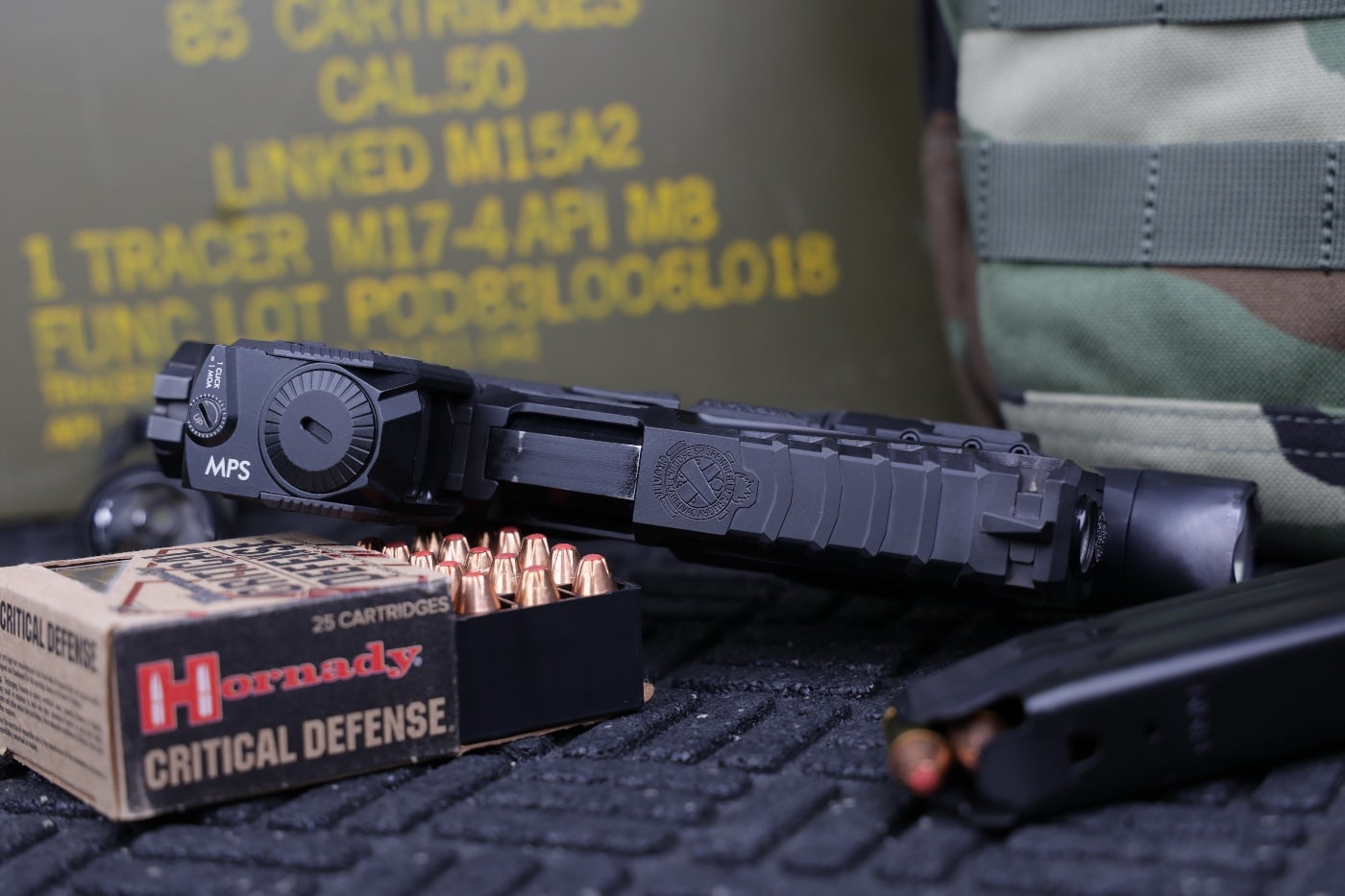
Now, no one is saying you have to run out and get all these parts or things done to your Echelon. Right from the factory, the Echelon is an advanced performer amongst its peers. The trigger is a step above many in the striker-fired market. The aggressive slide serrations and trench cuts make running the slide easy.
The operation is smooth and with the low bore axis you can run the Echelon very fast and flat. However, some of us just cannot leave good enough alone, and we seek to squeeze every bit of extra performance out of our pistols.
Tricking It Out
One of my personal favorite additions to any pistol is a magwell. Magwell’s are a favorite amongst competitors, police and many everyday carry enthusiasts. The main purpose of a magwell is to give a larger beveled surface area for you to insert a magazine under stress with speed and repeatability. A secondary benefit of a magwell is that it gives you a pinky ledge to really add a little extra grip to a pistol.
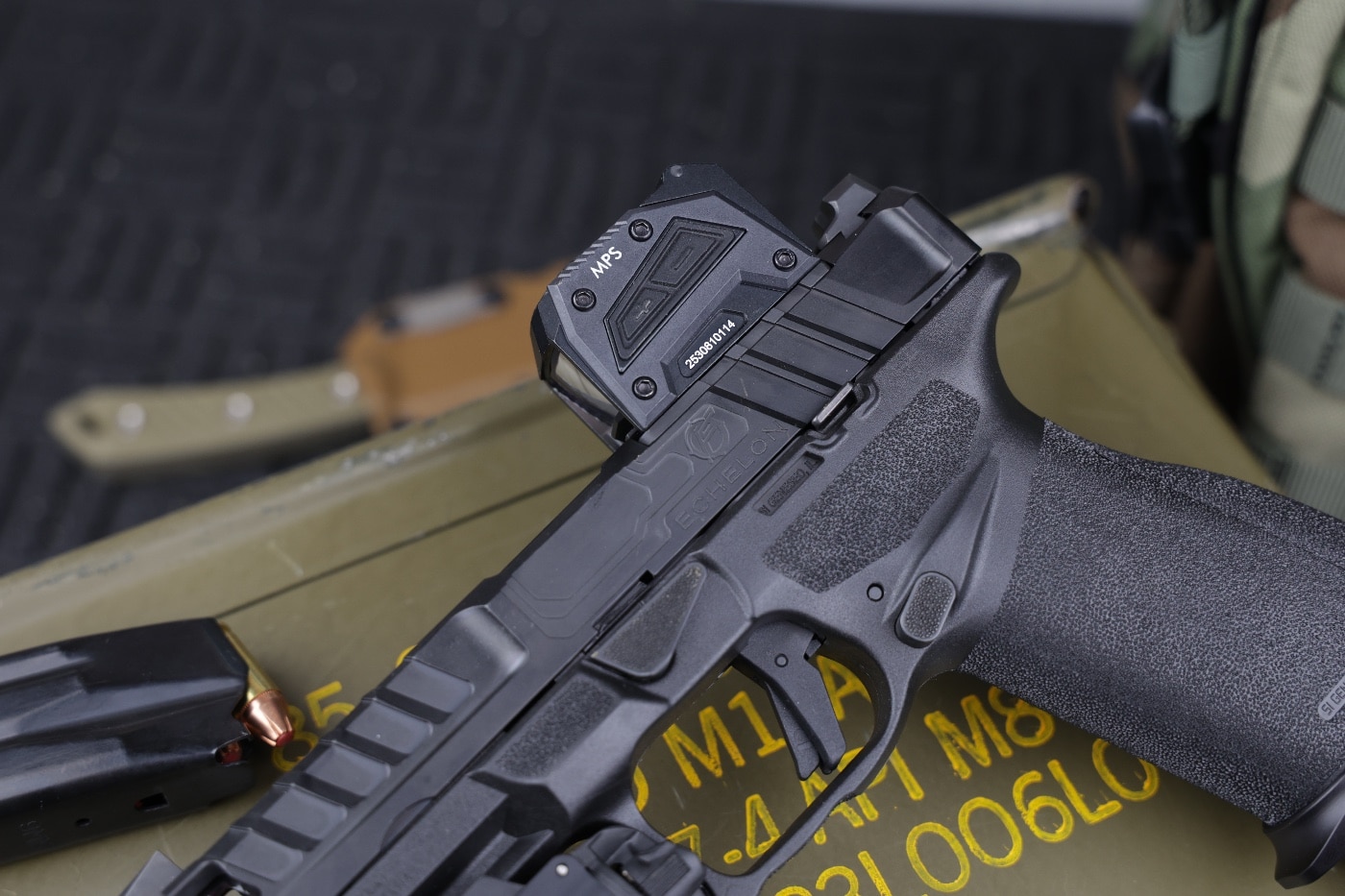
For the magwell for this project, I turned to Floyd’s Custom Shop. Floyd’s is known for creating extremely well-made and well-designed minimalist magwells that fit like a glove. This magwell will require the use of Floyd’s magazine baseplates, which come in standard capacity, +2 and +5 variations. All of these will have a sleek look and allow for positive retention, stripping and insertion of your magazines.
The key to a good magwell is that it must be large enough to make a difference and speed you up on a magazine exchange without being so large as to cause weight or size issues if carried concealed. It also must have no hard edges in the area where the magazine feed lips will strike it upon insertion.
The whole point is to provide a funneling effect, so any hard edge would just be a hang-up spot. You also need enough relief area around the internal base to strip a magazine should you experience an ammunition failure or stoppage that requires magazine removal. All of these elements are addressed with the magwell from Floyd’s.
Pancake Flat?
If you have ever heard someone say, “That shoots flat as a pancake”? There is a meaning behind that statement. When you want to get a fast follow-up shot and maintain an advantage in the competition or tactical world, recoil management is key.
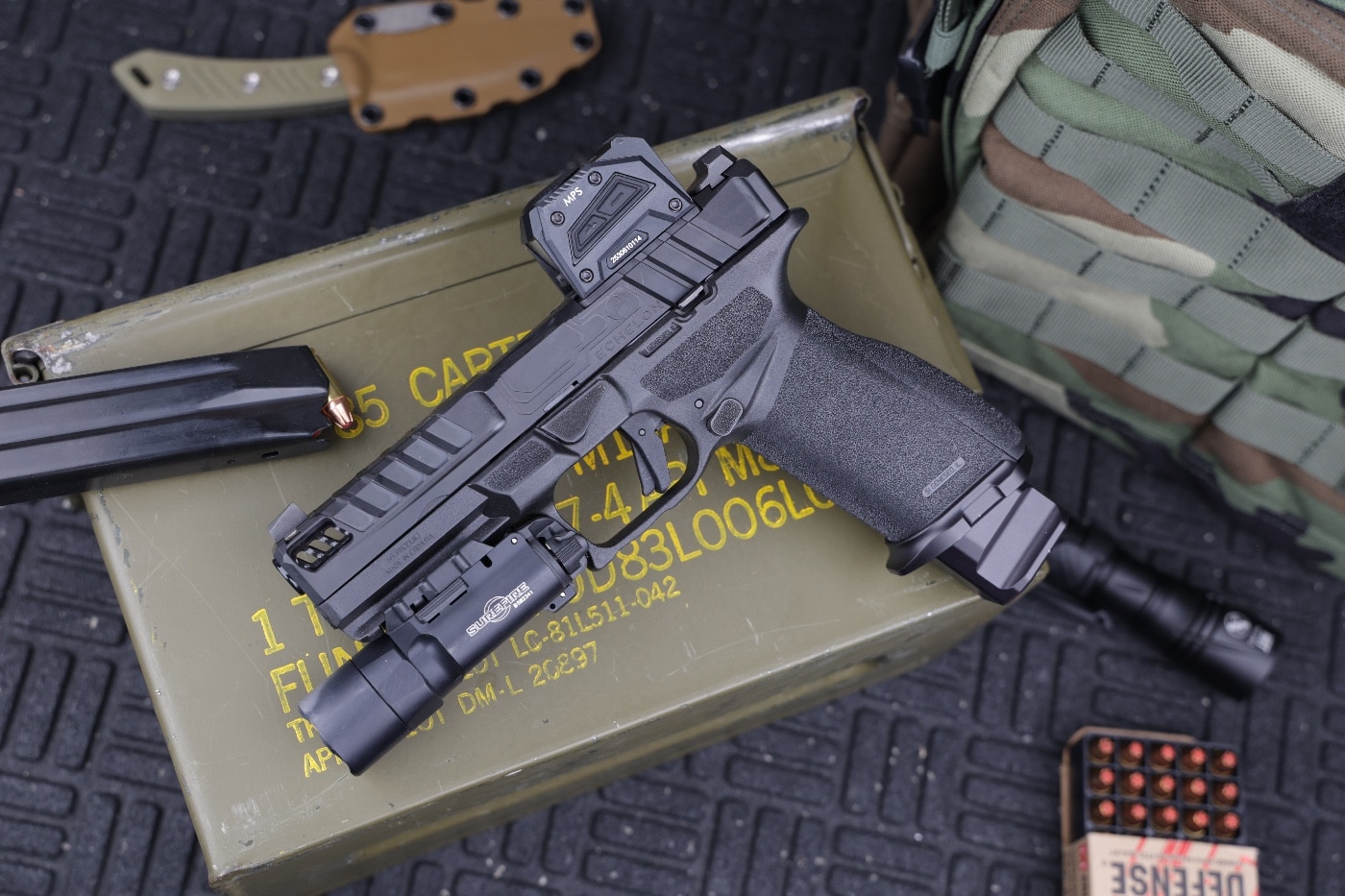
The idea of the above statement is that if your muzzles moved up and down about the height of a good fluffy pancake, say around ¾ of an inch, you are doing pretty well out there with muzzle control. The Echelon is definitely capable of being run flat and fast with follow-up shots as designed, but again, why not squeeze a little more performance out of it if we can?
When it comes to recoil reduction, we have a couple of options that have proven to be very effective. You can choose to add a compensator if you have a threaded barrel version of the Echelon. Or, if you have a standard barrel version like mine, you send it off to Floyd’s Customs and have the barrel and slide ported.
Porting is a permanent modification, so you have to be comfortable with the fact there is no going back once you do this. Floyd’s again has a great reputation for porting and slide work. The Floyd’s design is a tri-port on each side of the barrel and slide, with an aggressive forward slant and an upwards gas dispersion angle. Porting of this nature effectively pushes the gasses out the side and slightly upwards to ensure minimized muzzle rise and equal gas relief to the left and right.
Looks and Performance
Between the magwell and the porting work done to this Echelon, this is one aggressive-looking pistol. But how does it perform and feel after all of this work? The feel of the magwell and how it grips the hand is exactly part of the reason I am such a fan of them. Not only does it help with mag exchanges and controlling muzzle rise, it also provides another indexing point for your initial purchase upon drawing the pistol.
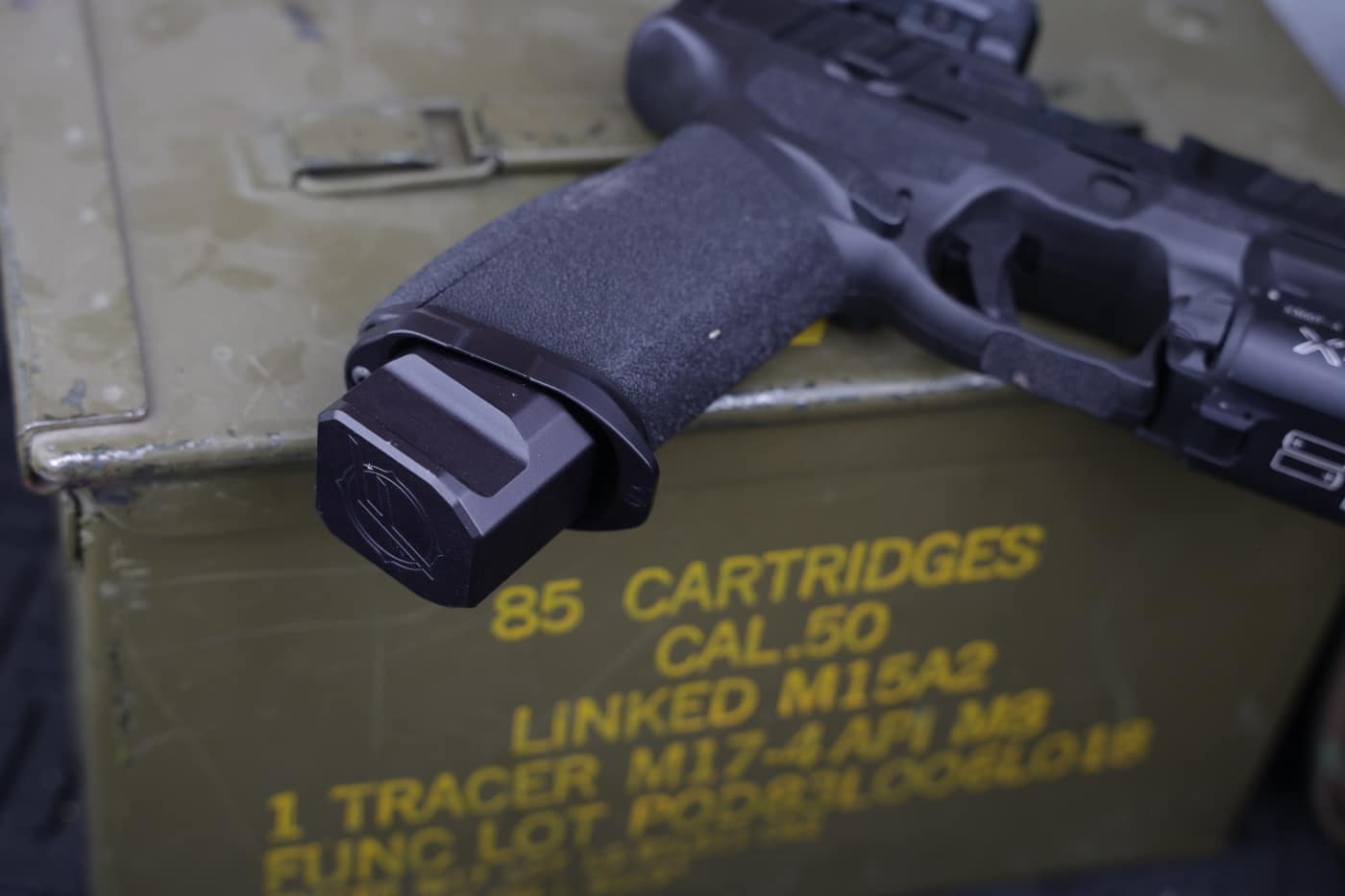
I don’t know about you, but I have grabbed low on the grip many times when training under stressful situations. When it comes to baseplates they will drop free faster, add a few rounds and securely lock onto the magazine body with two set screws for retention.
In addition to the porting, the slide work also featured the addition of serrations across the top of the slide. These followed the natural design and angles from the original design. These serrations are aggressive and complete the custom look, feel and performance of the slide. On the range, I noticed an immediate difference under recoil with the barrel porting relating to muzzle control.
You will also notice a difference in sound. Since some of the gasses are now exiting the sides of the slide and barrel, you will notice the sound traveling differently, especially if you use electronic ear pro. It is not anything annoying or excessive, just noticeable.
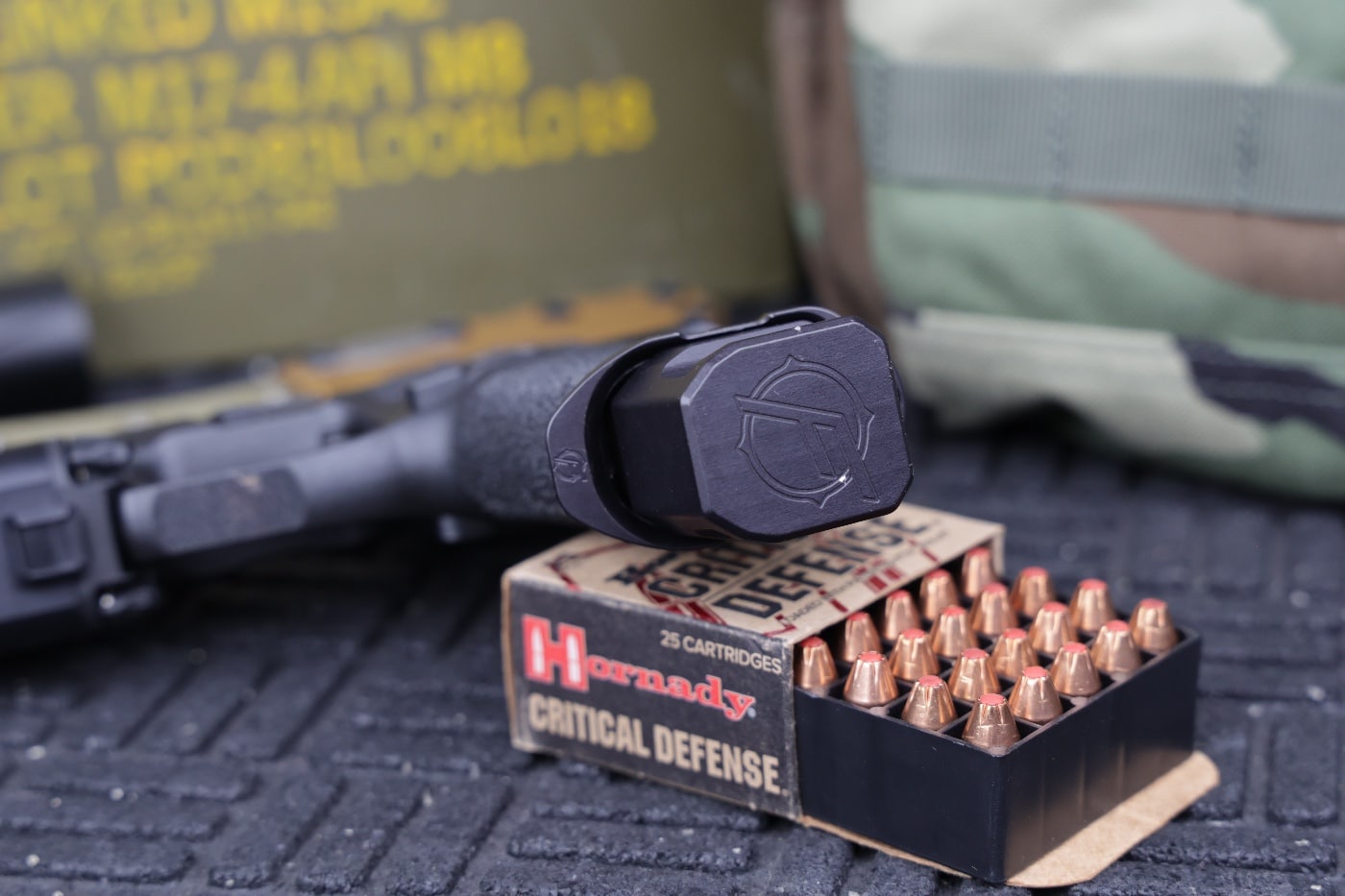
I am also happy to report after firing a few hundred rounds of different 9mm ammunition, from basic 115-gr. ball to 147-gr. self-defense ammo, there was not a single malfunction. All of this testing was completed with a Steiner MPS red dot sight on the pistol. Needless to say, I am very happy with the performance gains on my personal Echelon.
Completing The Ultimate Echelon
There are still a couple of small items to talk about to make this pistol the final package. No duty pistol would be complete without an optic and a light in the modern era. For this, I turned to a new variation of an old favorite: the SureFire X300 Turbo. This Turbo model throws a punishing 66,000 candela. This amount of light allows you to positively identify your target well beyond normal pistol shooting distances.
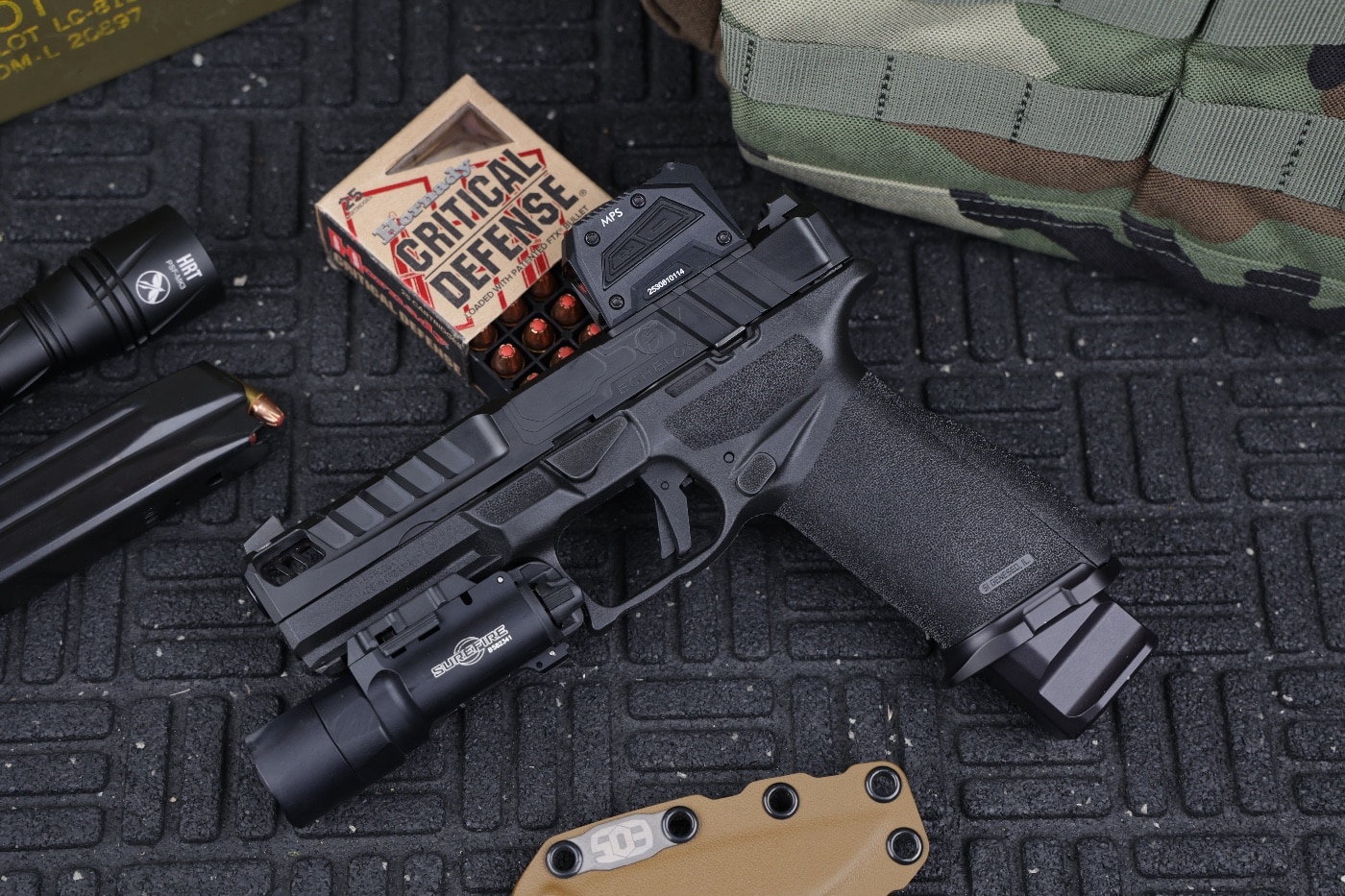
For the red dot, as noted, I went with the Steiner MPS fully enclosed red dot. I did this for two specific reasons. First, it’s a large optic for a pistol, so I wanted to ensure the aggressive porting would not cause malfunction with an optic like this. And second, because it uses the same optics footprint as the Aimpoint ACRO P1, it requires a plate. I wanted to ensure you would still be able to use the factory sights, even if just slightly, which is possible with the MPS.
I have to say, I am extremely happy with how this turned out and to me the juice is worth every bit of the squeeze if you want the ultimate Echelon.
Editor’s Note: Be sure to check out The Armory Life Forum, where you can comment about our daily articles, as well as just talk guns and gear. Click the “Go To Forum Thread” link below to jump in!
Join the Discussion
Featured in this video
Read the full article here




